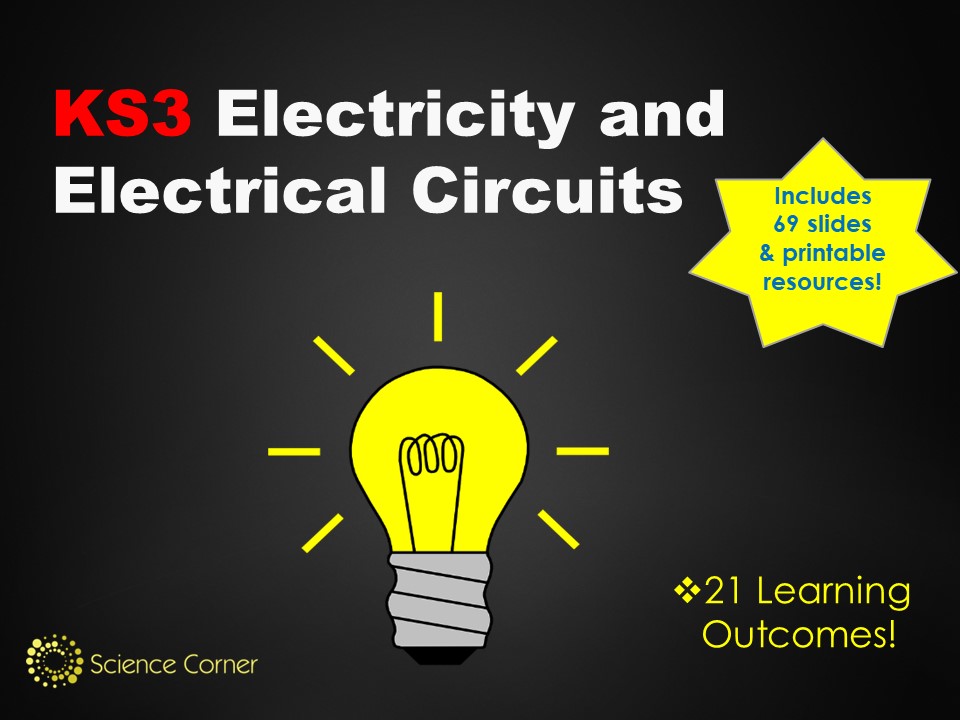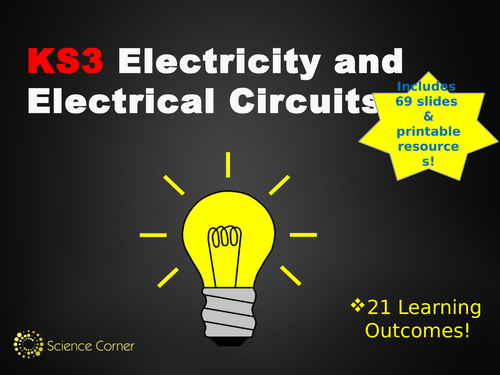





**This resource has been recommended by the TES Resource Team**
Get your learners thinking about electricity and electric circuits. My most popular resource includes:
• A lucid and logical 69-slide PowerPoint which includes many visual aids. The slides are thoughtfully animated (not over-animated) to allow opportunities for learners to participate and promote class discussions.
• Seven pages of interactive notes (scaffolded notes). These notes fit perfectly with the presentation. I find this activity keeps lower-level students engaged during the lessons while allowing differentiation for higher achievers.
• A crossword (with answers), some homework questions and a quiz.
**Just print and go! Or customize to fit the needs of your class.**
Learning objectives covered in this resources are listed below.
• By the end of these lessons, pupils should know:
1. that electricity is a form of energy.
2. that current electricity can be produced from cells, batteries or the mains
3. that there are a range of appliances in the home, which use electricity.
4. that we can represent components by symbols.
5. that current electricity flows in conductors but not in insulators.
6. that a complete path is needed from one side of the battery to the other for electricity to flow.
7. how a switch works.
8. that there are two types of circuit, series and parallel.
9. that current is measured in Amps.
10. that current is measured using an ammeter.
11. how to connect and use an ammeter.
12. that in a series circuit, the current is the same all the way round the circuit.
13. that in a parallel circuit, the current is shared but not lost or used up.
14. that the current in a series circuit depends upon the number and type of components used.
15. that a battery is a store of electrical energy.
16. that voltage is a measure of the amount of energy or push given to the current.
17. that more cells in series equals more voltage.
18. that the effect of voltage upon current and bulb brightness.
19. that an electric current causes a wire to become hot. .
20. that the bigger the current, the higher the temperature of the wire.
21. that if too much current flows, the wire will melt.
Hope you find it useful. Your feedback is much appreciated.
Get this resource as part of a bundle and save up to 50%
A bundle is a package of resources grouped together to teach a particular topic, or a series of lessons, in one place.
Something went wrong, please try again later.
Very useful for my year 8 mixed ability class. Thank you
Thank you for publishing your resource. It has been selected to be featured in <a href="https://www.tes.com/teaching-resources/blog/top-secondary-science-schemes-work"> a post</a> on the <a href="https://www.tes.com/teaching-resources/blog">TES Resources blog</a>.
great ! perfect for students understanding.
Lucid and logical. Well done
Report this resourceto let us know if it violates our terms and conditions.
Our customer service team will review your report and will be in touch.